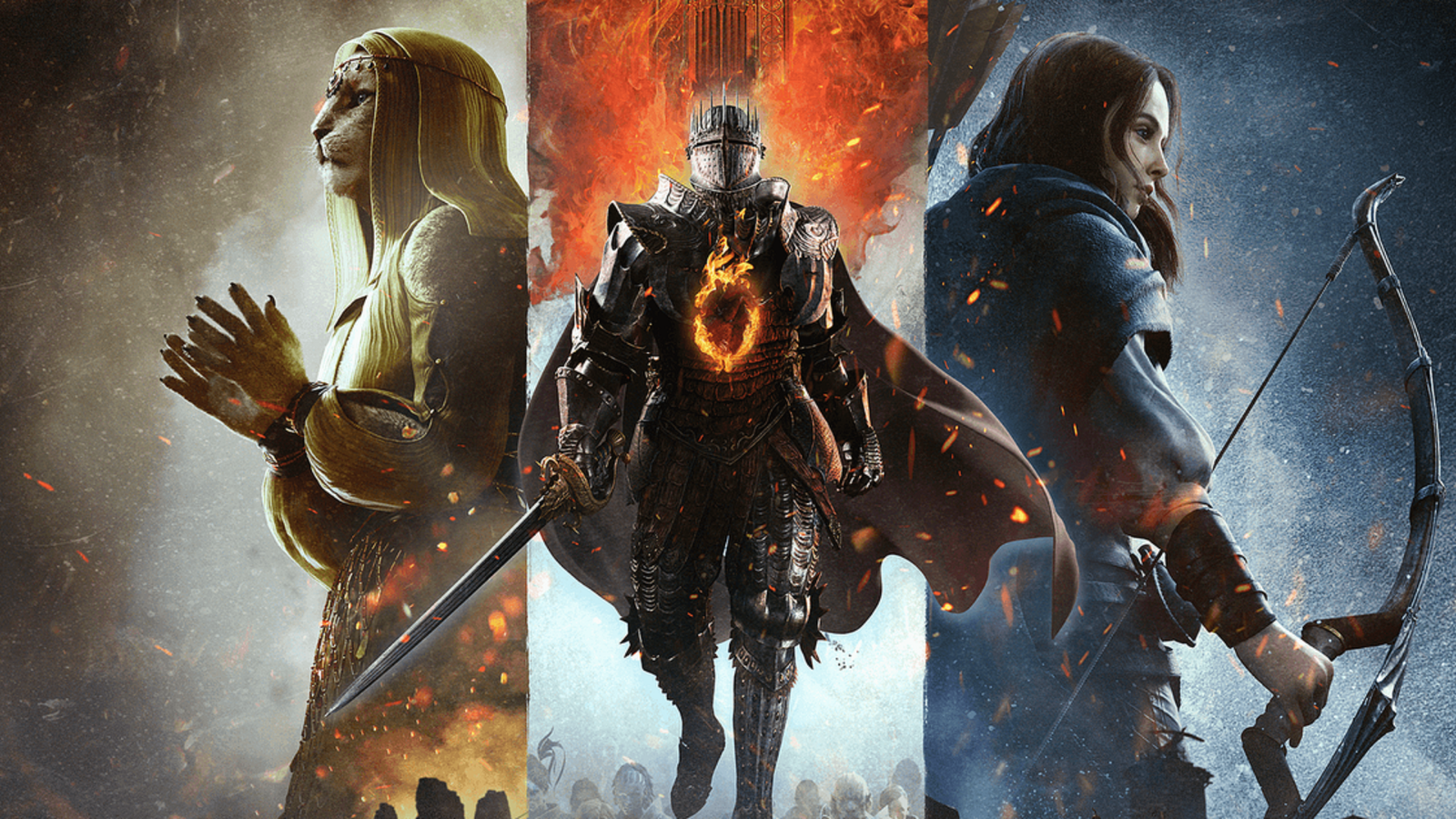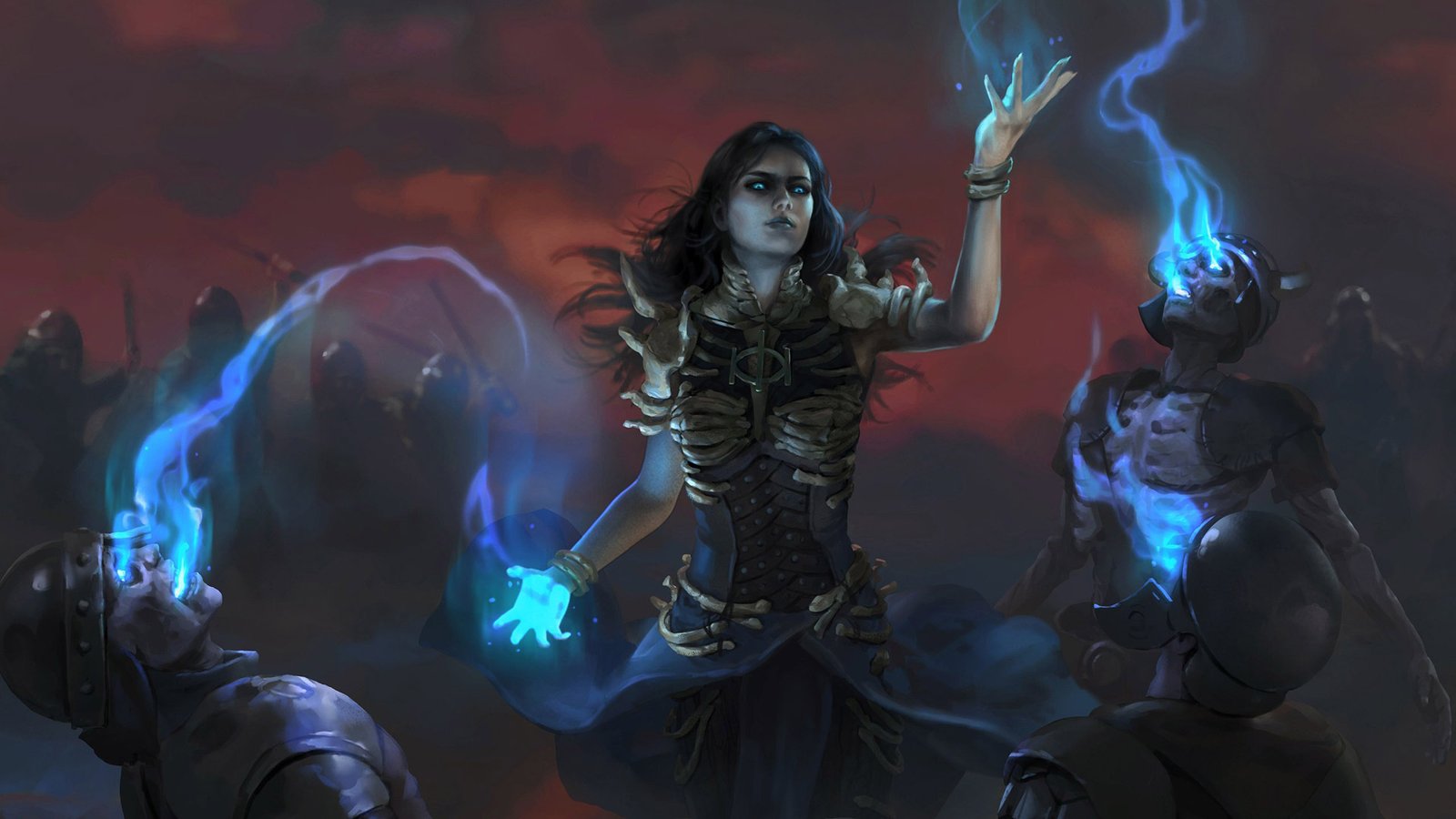
Dragon’s Dogma 2 is an open-world action RPG developed and published by Capcom, a sequel to Dragon’s Dogma. The game is set in a fantasy-themed world parallel to the first game. Besides its controversial launch, with lots of microtransactions, running at 30 fps on consoles, and being unplayable on PC for some people, Dragon’s Dogma 2 reached above 200,000 active players on Steam.
I want to start this review by saying that I played on PlayStation 5 and went through the game as a Thief. I wanted to test the other vocations, but if I did that this review would take too long, so all I will say about gameplay is from the perspective of a Thief. Also, I did not play Dragon’s Dogma (2012), but I will not consider that a problem, since in an interview with GamesRadar, DD2’s director, Hideaki Itsuno, said that the game was designed with new players in mind.
Core concepts
On Dragon’s Dogma’s 2 you create your own character, the “Arisen”, an important figure in the game’s world. The Arisen is supported by 3 Pawns, beings that can travel between worlds. The player has a Main Pawn, which is also created by the player, and can hire two more. They interact with the party and the player, although the phrases are very limited.
Pawns are AI-controlled but are also the way the game introduces multiplayer since you can hire Pawns from other players. They will do things for you, such as spot treasure chests and interest points, grab materials around the world, and fight. Said things can be done by any Pawn, but along the game, you may get a Specialization Item, that allows your Pawn to do more specific things, such as use healing items on the party, organize the party’s inventories, and more.
Gameplay
Combat
When you start the game you can choose between 4 vocations: Archer, Fighter, Mage, and Thief, more can be unlocked throughout the game. Each vocation has a little difference in playstyle, but from my experience, I would say it varies more between melee and ranged.
The combat is what you would expect from an action RPG. You are walking, and enemies appear, you fight them, earn exp, grab items, and continue your journey, I don’t have anything to call attention to at a normal combat. However, this game differentiates itself during fights with big monsters. They have weak spots you can hit and deal more damage. That is the strong point of ranged vocations. Dragon’s Dogma has a great mechanic that more games should have, that being you can climb your enemy, in a Shadow Of the Colossus style, to hit their weak spots which highlights these fights. Climbing your enemy is a thing a melee fighter will do.
Now, one thing that bothers me is that normal/small enemies don’t take hit-stun, at least from a Thief’s attacks, allowing them to simply destroy you in the middle of your “combo”. If you hit them several times they will take a step back, but is nowhere near close to the hit-stun you take from receiving a single attack. I think that would not be a problem if at least every melee class had a way to parry or perfect dodge enemy attacks, otherwise, the combat gets ugly.
Pawn AI
Traveling with the Pawns is definitely an experience. The cool part is that they “remember” other worlds, and when you pass through an area where they have already found a chest or collectible they will ask your permission to guide you there. A very interesting and unique mechanic, I had never seen before. They can even guide you on a quest if they have the experience.
Now the bad part is that, at least on my playthrough, in everything else, they are kind of stupid. When your character runs out of stamina or takes an attack and falls to the ground and needs help from the Pawns they sometimes just stand there, they throw themselves in front of enemy attacks and I have lost count of how much time I spent reviving them in combat. Sometimes they just get stuck somewhere on the map and I have to either respawn the Main Pawn in the nearest Riftstone or, if it’s a hired Pawn, find a new one.
Camera
I separated a section just for the camera because it bothered me throughout the game, and I will explain why. Dragons Dogma 2 has a third-person view, which is common for all kinds of games. When you fight in narrow areas such as caves, for example, the chance of you ending in a corner and the camera just ruining your life is high. Another scenario is when you are climbing monsters, the camera follows the monster’s movements, and when the enemy gets angry and starts slamming the ground, shaking, and running into the wall, you just don’t know where you are anymore. This can be just me but it’s something I experienced multiple times, and is difficult to represent in words.
Exploration
The exploration is fine, nothing out of the ordinary. There are two types of treasure chests, the normal ones, and the special ones. The special sometimes really rewards you for finding them, giving you gear, or rare items. Now the normal ones could be a bit more worthwhile, during my playthrough I only opened the ones that were in the way, I didn’t even bother to go after them.
I think it’s safe to say you pass most of the time on Dragon’s Dogma 2 walking. Sure, you do quests here and there, and they usually are excellent, but the distance between the cities is big. There is a carriage system that is technically fast travel between some cities, but time passes during the travel and there is a chance the carriage be attacked, and if it’s nighttime, good luck, you will go walking.
I don’t think that the walking is necessarily bad, it certainly adds to the game’s immersion, but, in my opinion, it gets boring, down the line. After all, there isn’t really anything to do. You can fight enemies, but they are all the same, you can find caves and ruins but they are rarely worth the time.
There is a real fast travel system, but for that, you have to activate Portcrystals, a type of stone pillar, in the place you want to teleport first. These can be placed there by default, or found and placed by the player. Then use a Ferrystone, another ultra-rare item, every time you want to teleport. To be honest, I only found 2 default Portcrystals and 1 had one Portcrystals in my inventory.
The way the game handles quest receiving is good. While you are walking around the city an NPC with a quest will stop you, or, if you pass by, follow you to talk about the quest. I imagine this can be annoying depending on the situation, but it allows the player to hardly miss a quest and maintain immersion by not having to put exclamation points or something of the type on NPC’s heads.
Dragon’s Dogma 2 quests are usually fun and interesting. Sometimes they give you choices, and different manners to proceed, remembering Baldur’s Gate 3, although some quests lack these important factors. One type of quest the game introduces early is timed quests. Although they also add to the immersion, the player can sometimes be impeded from completing the mission on time for factors out of their control. This doesn’t seem to be a problem in this game though, since, from my experience, the time seems to be generous.
Graphics and sound
Dragon’s Dogma 2 has Dynamic 4k resolution on consoles, but unfortunately runs at 30 fps. The game textures and animations are great. The only real complaint I have is the fps, especially in a game where the combat can be fast-paced and contain multiple or giant enemies. When big monsters such as dragons launch big attacks you can feel the game struggling.
The sound design is fine. Nothing caught my attention for good or for bad. The same can be said for the music. It’s what you would expect from an action, fantasy medieval-looking RPG.
I played the game on Japanese dub, so I don’t know if the same applies to English, but one thing that is straight-up lazy is the fact that, on character creation, there are multiple voices for you to choose from, but in reality, there is only one for each personality type and the rest are the same voices edited with higher or lower pitch. I would expect more from such a big developer.
Narrative
The game’s story is good, it starts interesting with a touch of mystery and unknown as you, along with your character, discover more about the world. I think the narrative destroys too early the mystery behind the Arisen and the story feels kind of rushed. Side-quests can interact with/help main quests, and the main quests in the beginning are creative, fun and make a lot of sense. However, the game ended abruptly in my opinion. Lots of things left to explain, characters practically unused. Even the villain just appears and dies, just like that. I don’t know if that is because I don’t have played the first game, if that is the case, please do let me know.
As I have said before, the side quests sometimes provide you with items necessary for main quests, besides developing and even introducing new main characters which encourages the player to do them.
Longevity and replayability
I finished Dragon’s Dogma with 30 hours, and believe me, I didn’t rush. I think the number is low for an open-world RPG today. If you take Persona 5 for example, it isn’t even open world and I had a save with 250 hours, it has just more content, to be honest.
The game has a new game+, but I don’t really feel like playing all that again, after all, as I said, there is a lot of walking ahead of you. There is the option to start the new game with a new class and test every class, but I don’t think there is enough difference in combat to be worth it.
Conclusion
Baldur’s Gate 3 set a new ceiling in the gaming industry, especially RPGs with similar ambiance. If you want a parameter, that is my 10. Dragon’s Dogma 2 remembers Baldur’s Gate in many aspects but doesn’t get near that level of liberty, game design, and content. I think Dragon’s Dogma 2 is a good game if you like action RPGs it’s really immersive and has an interesting narrative, but the performance problems, flaws, and game design choices I mentioned above put a weight on the experience.























